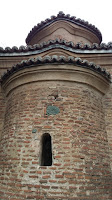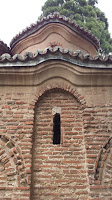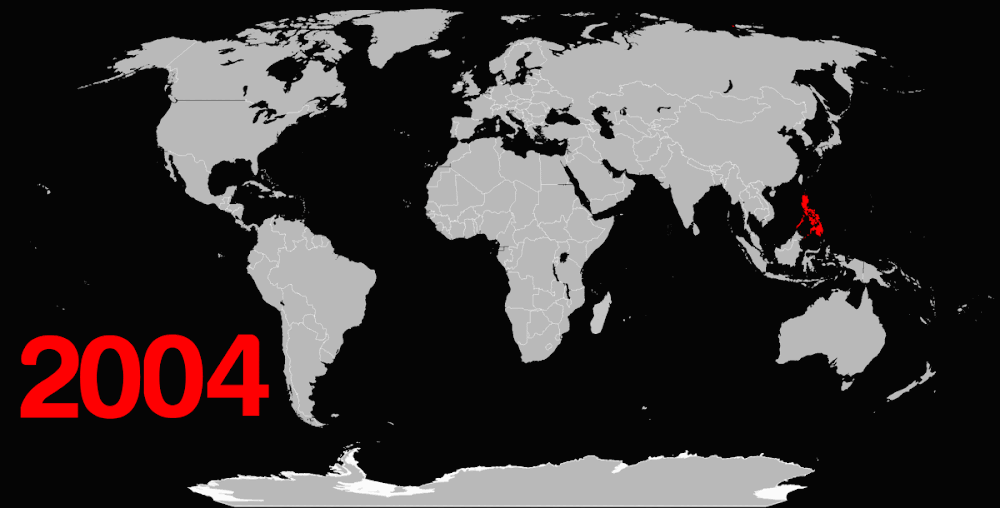
Once again, I was that Asian holding the immigration line. The officer asked what my purpose in Sofia was. I said tourism, then showed her my Sofia-Berlin boarding pass for Sunday. She wanted to see the ticket. I gave her a confused look asking why the ticket when I’m already showing you the boarding pass? It took her around half a minute to realize it, and then she let off an audible laugh. I also chuckled because I didn’t want to be an unforgiving jerk. We then added each other on Facebook, got married, and had four kids.



After getting married and having four kids, I went out of the airport terminal to find the metro station which was conveniently located on the far left side of the exit. The ticket machine accepts payWave! But I already changed some Euros to Levas at the airport so I opted for coins. Standard one-way fares here in Sofia are pegged at BGN 1.60 (~PHP 45). Coming from Germany, I found everything cheap. EUR 1 gives you BGN 2, and the prices here and there are almost the same in nominal value, meaning half the price.

A plate of good Bolognese at the museum’s resto bar at Serdika, for example, cost me around BGN 8. The same plate will cost you around EUR 8 at the Italian resto I frequent in Berlin. But a leva is half a euro, so it’s like getting a 50% discount! Another thing I love about Sofia is how the metro connects to the airport. It takes no longer than half an hour to reach the core of the city center from there, and without hassles! The cars are also clean, although the doors open and close a little too loudly and violently.

I got off at Serdika at around 10 PM. The city center is photogenic at night, all lit up and shit. I decided to have that late Bolognese fix before heading over to my Airbnb place. From Serdika, almost every tourist attraction is within walking distance. Most of them are places for religious worship. The Sveta Petka Church, for instance, was the first one I saw as I crossed the street after hopping off the subway. It’s a really small church the size of a big room, but it was obviously closed that late in the evening.

Behind it is a square surrounded by the classy façade of the Council of Ministers to the left as well as two more buildings to the right and to the north which boast the same architectural style. At the square you’ll see these curious looking glass domes on the ground which actually serve as the roof of an underground attraction that features ruins. Remember that this city has a really long history as part of two or more empires, although the communist influence from a few decades back proves to be more prevalent.

As I crossed the street to the National Archaeological Museum’s resto, I was greeted by a dancing fountain lit in different colors. That was cute. I was hungry. Finding the tram afterwards was a bit of a challenge but it did give me the opportunity to see the Palace of Justice at night. It looks more impressive under sunlight, though, because the two black lions guarding it are clearly visible and in stark contrast to the pale white portico. End of story, time for bed. Having six hours of freedom the next morning, I took a stroll.

As I ended my shift right after lunch on a Saturday afternoon, I decided to go straight to Boyana Church which is a UNESCO World Heritage Site. All it took was a fifteen-minute bus ride from my Airbnb place plus a ten-minute uphill hike. Did I mention that the buses had WiFi? Impressive, Sofia. Very impressive. It was very helpful in loading Google Maps. Most people combine this trip to Boyana with a trek up Vitosha given the proximity. I did have the time but neither energy nor willpower. Next time?

In fact, that is one of Sofia’s claim to fame aside from its many elegant buildings. Vitosha is easily reachable from the city center and that mountain has its own ski resort. Winter sports are really not my thing, figure skating aside of course. If you like skiing then Sofia is probably a good choice. But let’s go back to the church and how it works. Is it worth your time? It costs BGN 10 (~PHP 275) to get in, but I paid only BGN 2 (~PHP 55) thanks to my university ID. What follows is a queue similar to roller coaster rides.

No, they don’t offer a fast pass. What happens is that only eight people are allowed inside the church, and one group gets 10 minutes tops. I was there at around 12:30 PM but didn’t get in until 1 PM, which wasn’t a bad deal. You might get bored exploring the vicinity while waiting for your turn because it’s just a small complex. New groups also arrive every ten minutes or so which means leaving the line could mean getting banished to the end of it once you get back there again. Did I mention that the church is small?



It has, like, three chambers. The first one serves like a foyer with a few excavated murals on display. The second chamber has more murals preserved on the walls and the ceilings. Again, I am not a huge fan of the arts. You’ll get a good deal out of this experience if you have some knowledge of religious art from the Byzantine era. But the church boasts a collection of murals from different periods, hence the inclusion on the UNESCO World Heritage List. Unfortunately, photography is not allowed inside.
Nah, don’t try to pull off a subtle selfie here like you would in the Sistine Chapel. This one’s really small and the security personnel is very attentive. Anyway, the last chamber has a mini dome with a prominent mural on it, as usual. I wish I knew how to appreciate art. For what it’s worth, it did get me curious as far as religious history is concerned. I’m agnostic, but I acknowledge the power that religion holds over a lot of people regardless which era they are in. Sofia has a lot of that in exhibition.
[SOFIA] A Tale of Two Churches: The Small One





_poster.jpg)



0 creature(s) gave a damn:
Post a Comment